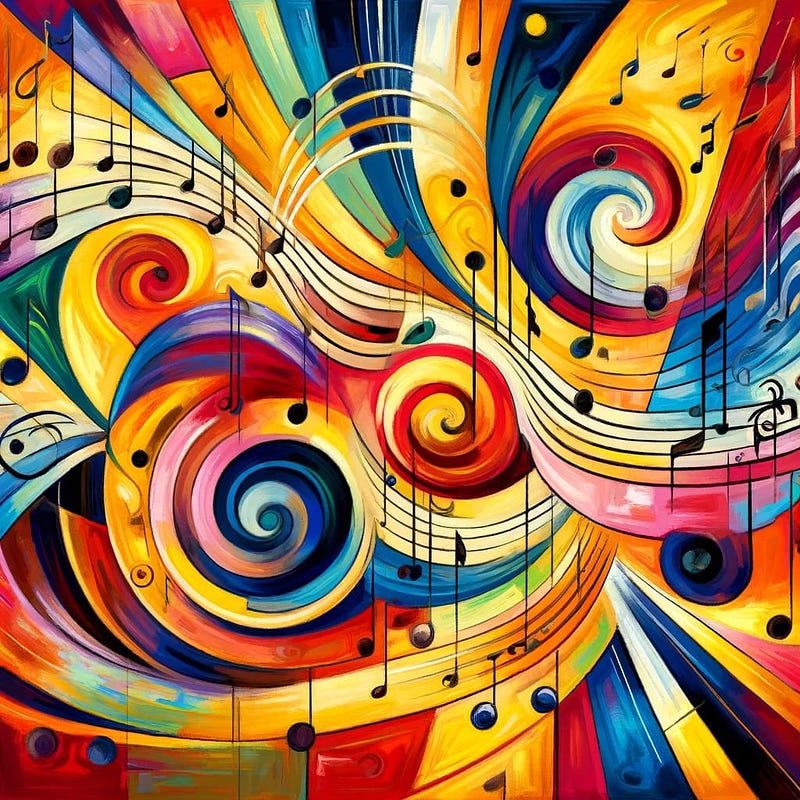The Colorful Intersection of Sound and Vision: A Deep Dive
Written on
Chapter 1: Understanding Synesthesia
Synesthesia is a fascinating phenomenon where one sensory experience automatically evokes another. Individuals with this condition might perceive colors when listening to music, taste distinct flavors when encountering specific words, or link colors to certain numbers or letters. These reactions are involuntary and consistently occur, meaning that the same sound or word will always invoke the same sensory response.
Synesthesia is relatively uncommon, impacting an estimated 1% to 4% of the population; however, some studies indicate it may be more prevalent among creative individuals, such as artists and musicians. Among the various forms, we will primarily explore Chromesthesia, which is the experience of seeing colors in response to music.
My personal journey: While I do not possess synesthesia myself, it has always captivated my interest. As a teenager, I color-coded the fretboard of my Spanish guitar to associate musical notes with colors, long before I understood that Chromesthesia was a natural phenomenon for some individuals. Nowadays, I utilize Max, a visual programming language, to create projects that link sound and color, continually pursuing that synesthetic experience. Even without it, I perceive a connection between colors and sounds that resonates with me.
Section 1.1: Artists and Their Colorful Connections
Some musicians and artists inherently connect music with colors, creating a seamless blend of their sensory experiences. Notable figures with synesthesia include:
- Franz Liszt: This 19th-century composer and pianist associated A major with a “rosy and brilliant” hue and E-flat major with a “pearly” tone.
- Lorde: The New Zealand singer-songwriter perceives music as intertwined with colors, significantly shaping the mood and atmosphere of her songs. Her breakout single, "Royals," contrasts themes of luxury and everyday life, reflecting the colors she associates with each. This synesthetic experience also enhances her live performances through visual elements.
- Pharrell Williams: He sees music as colors, a perception that influences his creative process. His hit song "Happy" exemplifies this, with its lively melody mirroring the vibrant colors he experiences. Pharrell’s synesthetic vision also informs his fashion and visual art endeavors.
Other noteworthy artists, such as Tori Amos, Billy Joel, Jimi Hendrix, and Duke Ellington, have also reported synesthetic experiences. Contemporary classical composer Olivier Messiaen described colors, shapes, and bird songs in his musical scores, helping performers grasp the essence of his compositions. This unique approach is evident in works like "Quartet for the End of Time," where he intertwined religious themes with a vivid array of colors and sounds, establishing a transcendent relationship between auditory and visual elements.
Subsection 1.1.1: The Nature of Synesthetic Perception

Section 1.2: The Inherent Nature of Synesthesia
It’s important to understand that synesthesia cannot be cultivated or learned; it is an automatic response for those who experience it. For instance, if one musician connects the note D with the color yellow, that association will always hold true for her. Conversely, if another artist links the same note with green, he will consistently perceive it that way. This phenomenon prompts us to consider the vastly different ways individuals interpret the world around them.
Chapter 2: Reflections on Unique Perceptions
The first video titled What color is Tuesday? Exploring synesthesia - Richard E. Cytowic delves into the intriguing world of synesthesia, illustrating how individuals experience this unique sensory blending.
The second video, SYNESTHESIA: I see music in full colour, explores the vivid experiences of individuals with synesthesia, offering insights into how this condition influences creativity and perception.
Closing thoughts: How do our distinct perceptions shape our experiences and artistic expressions? Do you see the world through a uniquely personal lens? If you experience synesthesia, we encourage you to share your stories. Embracing our differences in perception can deepen our appreciation of both the world and each other.